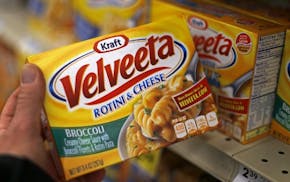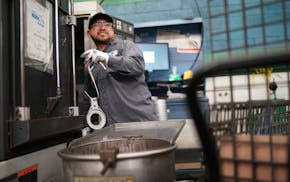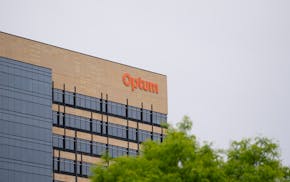Coronary bypass surgery requires a doctor to pry open a patient's chest and sew in new blood vessels to create a "bypass" route for blood that is trying to travel through clogged arteries near the heart.
One common complaint is all the pain and scarring in the legs.
In a surgery performed hundreds of thousands of times a year in the U.S., coronary bypass surgery causes side effects in the legs in about 5 percent of patients because doctors sometimes have to remove a portion of the great saphenous vein in the legs. Although blood vessels in the arms and chest are commonly used for bypass grafts, the leg vein is often harvested in more complex cases that require three or more bypasses.
The great saphenous is useful as a graft because it is the body's longest vein, but removing it can create leg scars and risks of surgical infection or nerve damage, even when minimally invasive laparoscopic surgical techniques are used.
A man-made blood vessel could avoid all that. Despite significant effort and funding, however, science has not yet produced an artificial blood vessel narrow and dependable enough to eliminate the need to harvest the great saphenous and other vessels for coronary bypass surgery. Existing synthetic vessels don't work when shrunk to the 6 mm or less needed to bypass the coronary arteries.
Minnesota med-tech pioneer Manny Villafaña has new a solution in mind. It involves technology invented at the University of Iowa that will be tested, and potentially commercialized, by Villafaña's latest start-up, Medical 21 Inc., which leased space in Plymouth last month.
Over lunch in Minneapolis, Villafaña sketched a back-of-the-napkin snapshot of what he says is a major opportunity. More than 400,000 coronary bypass operations are done each year in the U.S. — the worldwide total is double that — and each surgery requires an average of two or three grafts. Harvesting the grafts adds an hour or two of surgical time and more than $10,000 in hospital expenses, plus physical therapy and potential follow-up care for the patient.
"This technology, if it works, is enormous in its potential," Villafaña said.
Observers could be forgiven for thinking his pitch has a familiar ring.
Villafaña's successes are well-known. In the early 1970s he left a job at Medtronic to found a new pacemaker company called Cardiac Pacemakers Inc., which became Guidant and was eventually acquired by Boston Scientific. In 1976 Villafaña founded St. Jude Medical, the largest med-tech company headquartered in the state today.
But Villafaña's more recent ventures have fizzled. Publicly traded Kips Bay Medical folded last year after early clinical testing failed to validate the feasibility of the eSVS mesh, a device that was supposed to reinforce natural vein grafts in bypass surgery with nitinol wire. Kips Bay raised $16 million in a 2011 initial public offering and was wound down four years later.
Before that, Villafaña's CABG Medical Inc. discontinued operations in 2006 after its polymer, drug-eluting artificial vessel for bypass surgery called the Holly Graft System also failed to get strong enough clinical results to justify keeping the company open. CABG Medical raised $30 million in a 2004 IPO before it wound down.
"The challenge of trying to develop an artificial graft has been around forever. The first time that I looked at this field was back in 1982," Villafaña said. With the new company, "we named it Medical 21 so that we have a nice line of demarcation between what we're doing and what was done before. … The idea of how to do it was developed by me in the 21st century. And we're using technologies of the 21st century."
But the talkative, Bronx-born med-tech entrepreneur got cagey when asked about the technical details of the invention.
Villafaña would say only that the innovation is new, and that it involves using cellulose graft conduits manufactured using techniques patented by the University of Iowa, plus a nitinol support sleeve for the grafts, which already have commercial approval in Europe.
Cellulose is used in other medical applications like wound dressings because it's highly compatible with human biology. Nitinol is widely used in medical devices like unfoldable heart valves because it is similarly biocompatible and can snap back to its intended shape after being folded. One of the key secrets for now is "what we do to the cellulose," but Villafaña wouldn't elaborate.
Public records show that Villafaña licensed the cellulose technology from the University of Iowa in January, but the university redacts details about the royalty arrangement and the unpublished patent application.
Villafaña is working to generate interest among potential early backers, but declined to discuss financial goals or the fundraising process. Early experiments involving animals will start soon, he said, with plans for an overseas feasibility trial in humans next year.
"We feel that we have a chance," Villafaña said. "If you don't go after these things, they disappear."

DOGE cuts federal money for upgrades at Velveeta plant in New Ulm

Minnesota factories see orders tank on continued trade uncertainty
'We don't want to lose this mine': Fear sets in for Iron Range miners as shutdown takes hold

UnitedHealth sues the Guardian, alleging defamation in coverage of nursing home care
